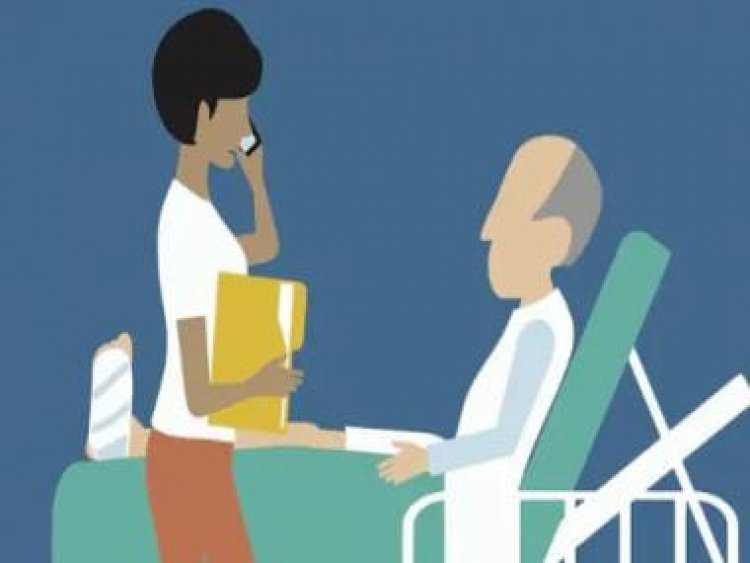How digital transformation is enabling health equity
How digital transformation is enabling health equity

We continue to live in a world where our race, geography, income, and positioning in the social strata decide our access to healthcare. Even though economic or social hurdles can be taken care of through external factors, the rest stand as tall barriers for many. Healthcare services are not yet advanced in remote parts of the country, resulting in many people migrating to cities for better healthcare.
Digital penetration across the world significantly scaled up post Covid-19, but disruptive tech needs a wider adoption for it to reach these remote locations to make a larger impact. Digital health has been around for some time now and needs to be understood fully to leverage it for the greater good.
Providing equal and affordable access to healthcare has the potential to significantly improve patient outcomes as it enables easier access during emergency situations, better manage chronic conditions and late-stage interventions, improve patient monitoring, and help in overall population health improvement. Digital technologies in healthcare can make this possible.
Adopting digital health our current health care systems struggle with the quantum of workload for physicians and clinicians, technological interventions can help to optimize workflows and reduce the workload.
Once overhauled, institutions will be able to mitigate lacunas and bring efficacy to address health disparities across the regions.
Additionally, digitalisation encourages cooperation, which furthers the boundaries of digital health study. In the future, digital healthcare is what will guarantee the provision of valuefocused treatment and the achievement of meaningful health outcomes. It may even clear the way for universal healthcare to be implemented.
Identifying scope of work
Before addressing and mitigating problems in the system and adopting technology as a key driving force, the needs of the patients must be classified. One technology solution may not work as a one-size-fits-all solution for healthcare. Evaluating the needs of the underrepresented population to create tailor-made digital solutions that can help facilitate focused health interventions to address their immediate needs. Identifying the specific needs of specific groups to curate precise digital tools can prove impactful in the long run.
Instead of just digitising existing healthcare delivery models, a fundamental rethinking of these systems is required if we are to achieve genuine health equality. In order to effectively help those who are underserved, we must first assess their situation and develop digital solutions that are specifically designed to meet their requirements and provide targeted health treatments. It is possible to improve the quality and efficiency of care by identifying groups with similar requirements and then developing a solution that makes use of digital technologies to satisfy those needs.
Devising a digital health strategy
Appropriate investments are necessary to improve connectivity, affordability and accessibility. Policy support is a crucial element that often goes unnoticed but has a larger impact on beneficiaries. A well-planned strategy to adopt health tech and leverage it to its full potential to regulate supply-chain logistics, bring in universal healthcare collaboration, integrate design thinking, drive value care and enable transparency in the whole system.
Health inequities are exacerbated by obstacles to technological access, which can only be removed via a deep understanding of the interplay between social, cultural, and economic realities. To close the gaps and provide a long-term, comprehensive healthcare answer, we must address connection, affordability, and accessibility with the right kind of investments, creative and inclusive solutions, and legislative support.
Data driven solutioning
Digital health is redesigning future healthcare systems where efficacy will be at the core of all. Health equity requires institutions to accept technology at a macro level in order to improve patient outcomes at a granular level. Emerging technologies like remote surgeries, robotic assistance, and invisible wearables will just enable high-quality healthcare services to one and all. The full potential of digital health lies in advancing racial, gender, social and age inclusivity, and mitigating gaps in primary healthcare systems.
Positively, advances in both technology and our understanding of the data they provide are being put to work which is improving health outcomes for people and reducing health inequities. By enabling practitioners to go beyond clinical considerations to acquire a complete view of a person’s important markers impacting health, health “techquity,” or the strategic design, development, and deployment of technology to promote health equality, improves health outcomes for everyone. Clinicians’ capacity to deliver person-centered, equitable care is enhanced by knowledge of social risk factors, which in turn guides treatment decisions.
Health equality can be maintained through technology just as it was when Covid vaccines were provided to the whole population of India, complete with downloadable digital vaccination certificates verified by QR codes. If we are going to go ahead and fully embrace digital technology to guarantee health equality, we will need to create solutions that cater to the requirements of all populations and boost their level of digital literacy. This can only be achieved if the healthcare personnel are equipped with both clinical and technological expertise. By embedding design thinking technology at each stage, digital has the ability to revolutionise the whole supply chain, fostering more responsive, transparent, and high-value care.
The author is a Senior Vice President, Clinical Support Solutions, IKS Health. Views are personal.
Read all the Latest News, Trending News, Cricket News, Bollywood News,
India News and Entertainment News here. Follow us on Facebook, Twitter and Instagram.
What's Your Reaction?



























































